
Learn how to build a winning customer insights strategy to improve decision-making, enhance customer experience, and drive growth.

Improving your customer experience starts with a strong customer insights strategy. In simple terms, this strategy is your game plan for collecting and leveraging customer insights to drive better decisions. It ensures you understand customer behavior and needs—and use that knowledge to enhance their experience.
In fact, 73% of customers say customer experience is a top factor in their purchasing decisions, so investing in insights is no longer optional.
In this guide, we'll break down how to build a winning strategy—from setting clear objectives to using analytics and AI, mapping journeys, and creating a continuous feedback loop. By the end, you'll know how to turn raw data into actionable insight.
(Hint: It’s easier than you think, and we'll keep it jargon-free.)
(Before we dive in, if you're new to the topic, check out our primer on customer insights for a quick introduction.)
Every great strategy begins with a clear goal. So first, define what success looks like for your customer insights program. Do you want to boost customer satisfaction, reduce churn, increase conversion rates, or improve a specific service? Be as specific as possible.
For example, your objective might be “to improve our NPS (Net Promoter Score) by 10 points in the next year by addressing top customer pain points.”
Clear objectives will guide your team and help you measure progress.
Why is this important? Without defined goals, you might collect a ton of data and not know what to do with it.
Clear objectives keep your efforts customer-centric and business-focused. They ensure you're gathering and analyzing customer data with purpose—whether it's to inform product improvements or to refine marketing strategies.
And importantly, tie these objectives to business outcomes. If your goal is to boost satisfaction, connect it to something tangible like “which should increase repeat purchases by 15%.” This alignment will help everyone see the value of the insights (more on that later).
Once you've set clear objectives, it's time to identify where you'll gather customer data. Chances are, you already have a goldmine of information from various sources:
Combining these sources gives you both quantitative metrics (like ratings and usage stats) and qualitative feedback (such as comments and complaints).
For example, Instacart pulls in customer input from app store reviews and survey responses to get a 360° view of the user experience. By consolidating feedback from their mobile app reviews (including Apple App Store and Google Play comments) along with internal survey data, Instacart can spot consistent issues that crop up across different touchpoints.
This comprehensive approach prevents a narrow focus; you don’t want to base decisions only on survey data if social media is aflame with a separate issue, right?
Importantly, break down data silos. Customer insights work best when all teams share their data. If your marketing team has a database of social sentiment and your product team has usability test findings, combining these can unveil patterns that siloed analysis would miss. In practice, using a unified customer insights platform or framework can help merge these sources.
The goal is to collect customer insights in one place so you can analyze them together.
Think of it like assembling pieces of a puzzle—each data source is one piece. Only when you put them together do you see the full picture of your customer experience.
Not all customers are alike, which means a one-size-fits-all analysis might gloss over important details.
Customer segmentation is the step where you group customers into categories to understand each group better. This could be based on
By segmenting, you can discover insights that are often lost in an “average” of all customers.
For example, a SaaS product might find that new users complain mostly about setup difficulty, while power users care more about advanced features. These two segments have different needs and feedback, and addressing both requires recognizing the differences.
When building your customer insights strategy, define a few key segments relevant to your business.
Then, analyze customer feedback within each segment. This way, you might discover, say, customer behavior trends that only occur in a certain region or customer tier.
Segmentation enables personalized insights—you’ll know what each group cares about. It also sets the stage for personalized marketing, which we’ll cover soon. For now, remember that segmentation makes your analysis more granular and actionable.
Reading through thousands of survey responses or support tickets manually is like looking for needles in a haystack. Thankfully, modern customer insight programs use analytics tools (and, increasingly, AI) to simplify this process.
Let’s break it down some tools:
AI and analytics tools supercharge your ability to leverage customer insights and analytics. Instead of drowning in data, you receive clear, prioritized summaries. They also help eliminate silos by consolidating data from different channels into unified data analytics.
For example, analytics can correlate survey results with social media sentiment analysis—like noticing negative Twitter mentions aligning with low CSAT scores on a particular day. AI-driven tools can even reveal unexpected patterns or hidden issues, helping your team proactively address customer needs.
Ever hear the phrase “walk a mile in your customer’s shoes”? That’s exactly what customer journey mapping does—charting each step customers take with your business, from first contact to long-term loyalty. By mapping the journey, you clearly see every interaction—like viewing ads, visiting your site, or contacting support—and quickly spot what's working or where things break down.
Why include journey mapping in your customer insights strategy? Because context matters. An isolated complaint (“the sign-up is confusing”) is clearer when viewed alongside data showing many users dropping off at the sign-up stage. Journey maps help tie specific feedback to each experience phase, prioritizing improvements at critical points.
A typical customer journey looks like this:
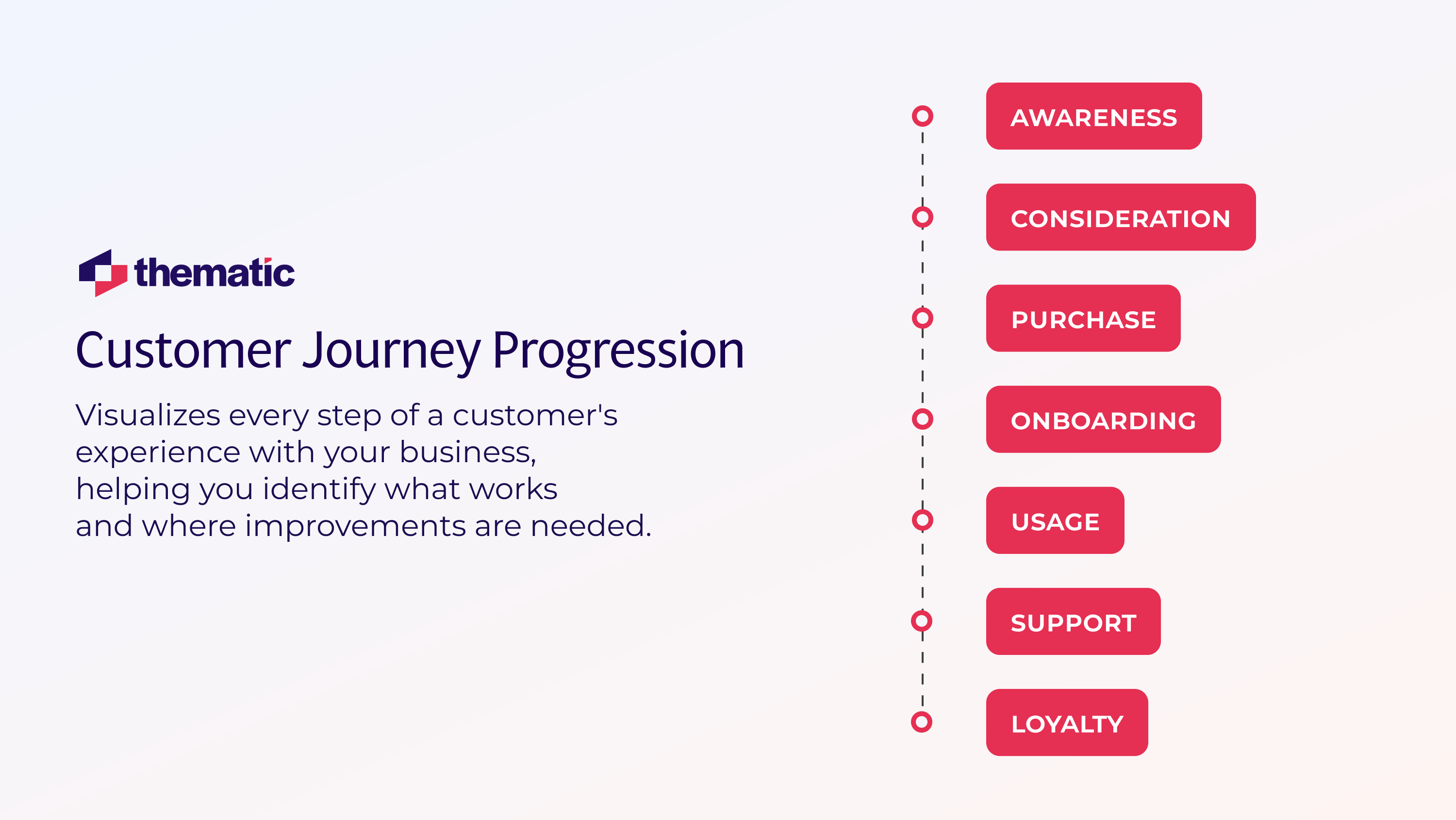
Under each phase, list touchpoints (e.g., website, support chats) and customers’ goals or questions. Then, overlay insights from your data. For instance, analytics might reveal lots of FAQ clicks during onboarding, suggesting unclear instructions. Or surveys might highlight frustration due to long support wait times.
Mapping out the journey also boosts cross-team collaboration. It clarifies transitions between teams—like marketing to sales—helping everyone understand their role in the bigger customer experience picture.
Surprisingly, only about half of companies use formal customer journey maps, so adopting one places you ahead of many competitors by linking your insights directly to real-world experiences.
Your customers constantly tell you what they want—especially when you give them opportunities to share. Customer feedback is a goldmine for improving products or services. A strong customer insights strategy clearly turns feedback into actions on your product roadmap.
Gather feedback proactively through in-app surveys, beta tests, and community forums, and don't overlook unsolicited social media reviews. Assign someone to regularly analyze this feedback, spotting common issues.
Take Melodics, a music education app, for example. They initially reviewed survey responses manually, but it was time-consuming and incomplete. By adopting an AI-powered feedback analytics platform, in this case, Thematic, Melodics quickly identified critical issues. Surprisingly, technical problems like app lag—not additional lesson content—had the biggest negative impact on user satisfaction.
This insight helped Melodics prioritize improving app performance, leading to higher user retention.
The lesson here? Look for the signals amidst the noise. Linking qualitative feedback to metrics (like satisfaction scores) can pinpoint what truly matters, objectively guiding your improvements.
Another essential practice is closing the feedback loop—letting customers know you've acted on their input. In fact, 77% of customers view brands positively when they visibly act on feedback.
At scale, implement regular reviews of customer feedback insights and track actions clearly. Over time, customers will appreciate seeing their feedback shape your products, boosting loyalty. Treat customers as product development partners—their feedback is valuable free research.
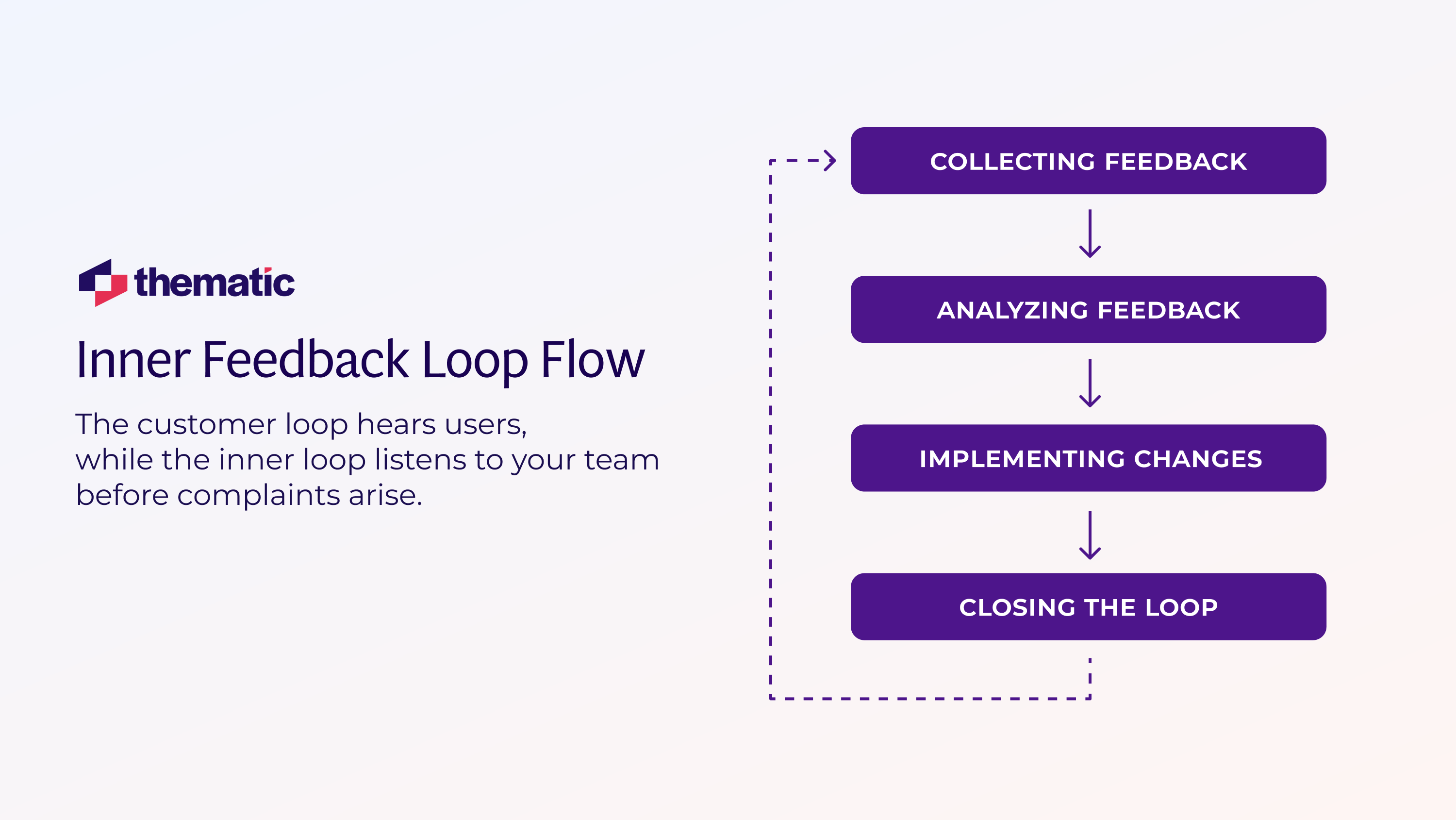
Remember those customer segments we talked about? Here’s where they become marketing gold.
Personalized marketing means tailoring your messages or offers to individual interests, rather than blasting everyone with the same content. Insights help create campaigns that resonate deeply with specific customer groups. Why personalize? Because customers now expect it:
Yet there's often a perception gap: 85% of businesses believe they're personalizing effectively, but only 60% of customers agree.
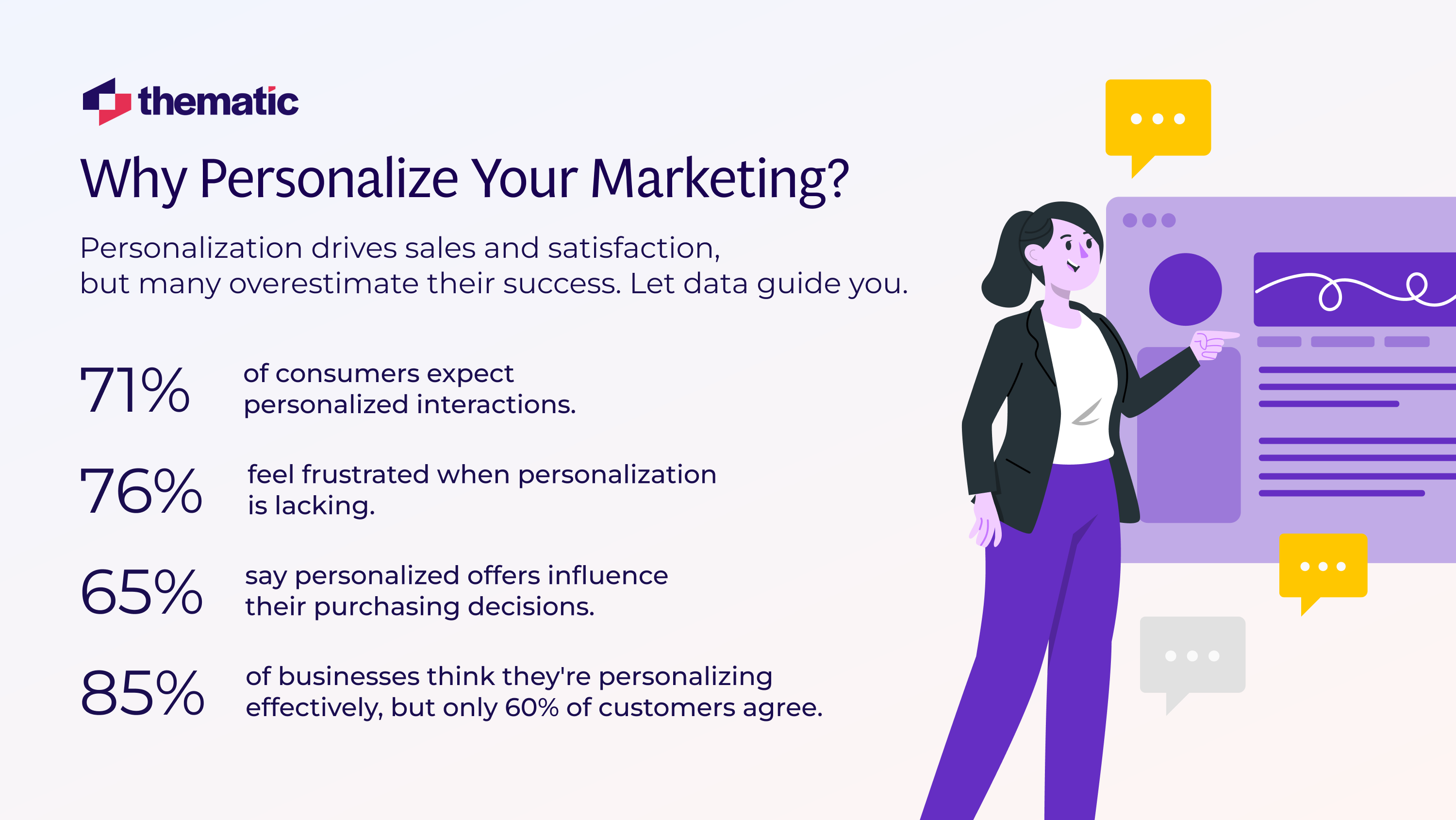
Here’s how to use data-driven customer insight for personalization:
Keep in mind, effective personalization relies on good data management. Regularly update customer data and respect privacy preferences—transparency builds trust. Always validate results through metrics like click-through or conversion rates.
Insights-driven personalization creates a win-win scenario: customers receive relevant content, and your business enjoys higher engagement, sales, and loyalty. As Mailchimp’s founder famously said,
“If you’re not constantly listening and ready for change, you’ll miss the opportunity.”
Insights-driven personalization is how you seize those opportunities.
The world is moving fast, and customer preferences change in a heartbeat. Issues can go viral overnight, and you’ll wake up in a nightmare if you're not fast enough.
That’s why real-time tracking of customer insights is crucial. Instead of waiting for quarterly reports, real-time monitoring lets you see customer feedback and satisfaction metrics instantly and respond quickly.
Real-time customer insights look like live dashboards showing current customer satisfaction scores, instant alerts for spikes in specific support topics, and daily-updated heatmaps showing user behavior. Imagine launching a new feature and seeing a sudden flood of chatbot error messages—real-time alerts help your team fix it immediately, avoiding a potential crisis.
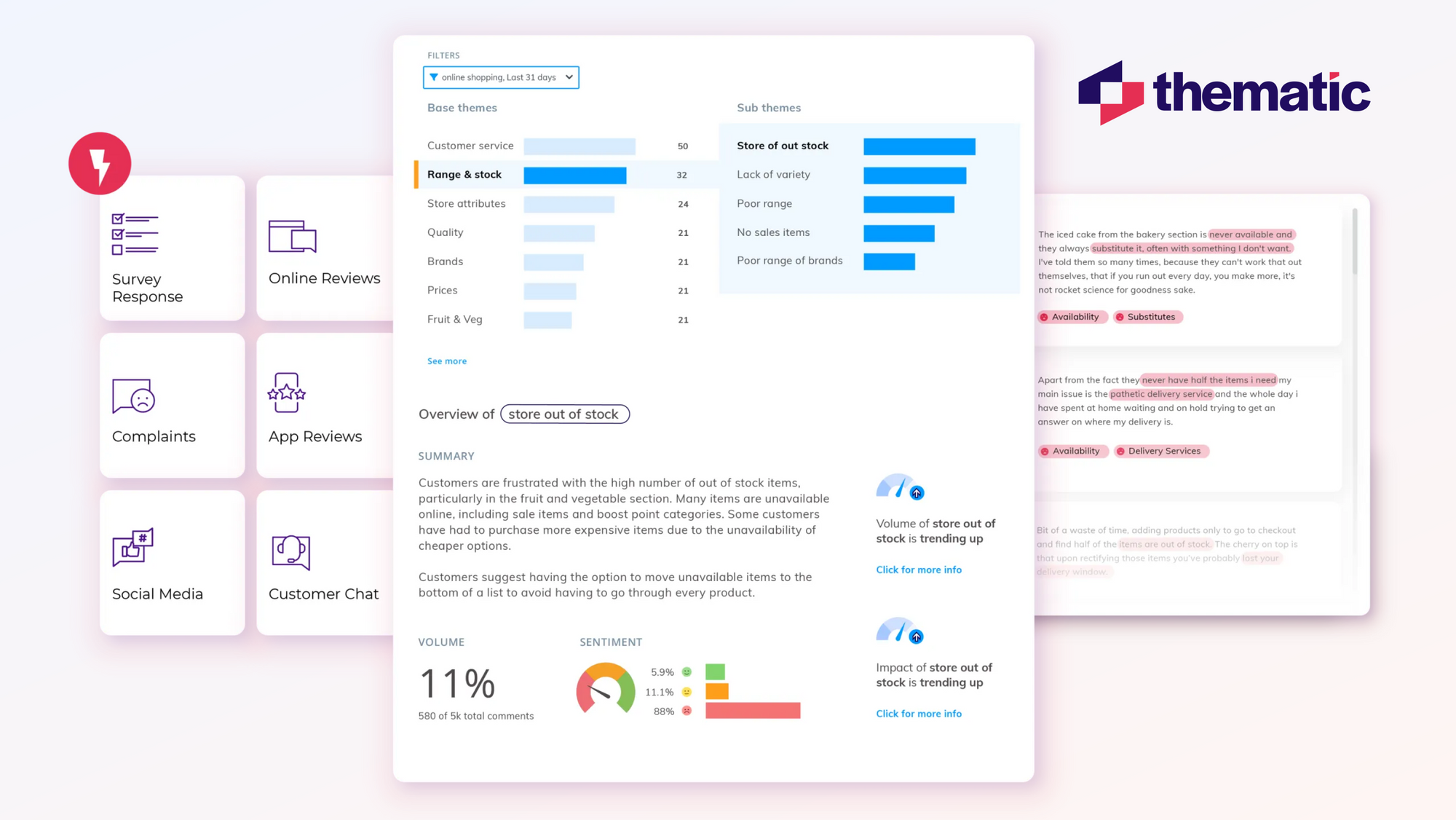
Companies often use:
Research shows clear benefits: Companies using real-time customer journey analytics reduce service costs by 15-20% and boost sales by 10-15%. Fast problem-solving significantly impacts your bottom line.
Start small—pick a couple of metrics to monitor, like app ratings or support ticket sentiment. Define clear thresholds for when your team should act.
Real-time tracking keeps your team agile and responsive, ensuring you handle customer issues promptly and effectively. Customers notice and appreciate swift responses, reinforcing loyalty and satisfaction.
To truly win with customer insights, you must connect them clearly to your broader business goals. After all, insights only matter if they lead to meaningful actions and measurable impacts.
Start by linking customer insights directly to key business KPIs. For example, improved customer satisfaction typically boosts retention, leading to higher revenue.
Organizations that clearly tie customer satisfaction to profitability are 29% more likely to secure bigger budgets for customer experience initiatives—showing execs the real value behind metrics like NPS or CSAT.
It’s helpful to create a simple mapping:
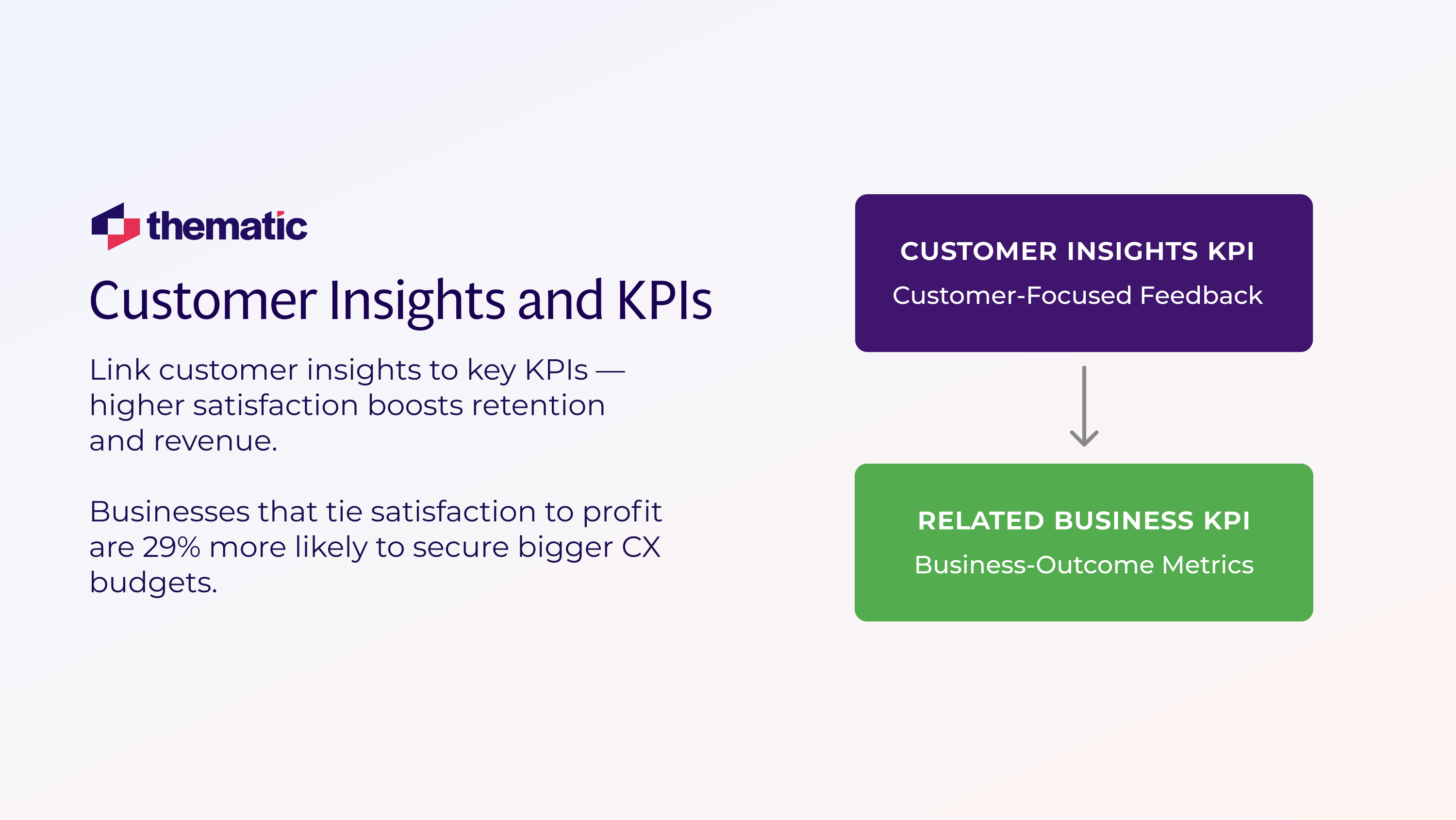
For instance:
Clearly share these connections internally. Did addressing a complicated onboarding process boost activation by 20%? Broadcast this win.
Another crucial aspect is cross-departmental cohesion. Don’t isolate your insights within the CX team. Include marketing, product, operations, and finance. For example, if customers request a new payment option, product and finance teams can collaborate effectively.
Studies confirm this approach pays off: “Customer-obsessed companies” are four times more likely to achieve over 10% annual revenue growth and are typically 60% more profitable.
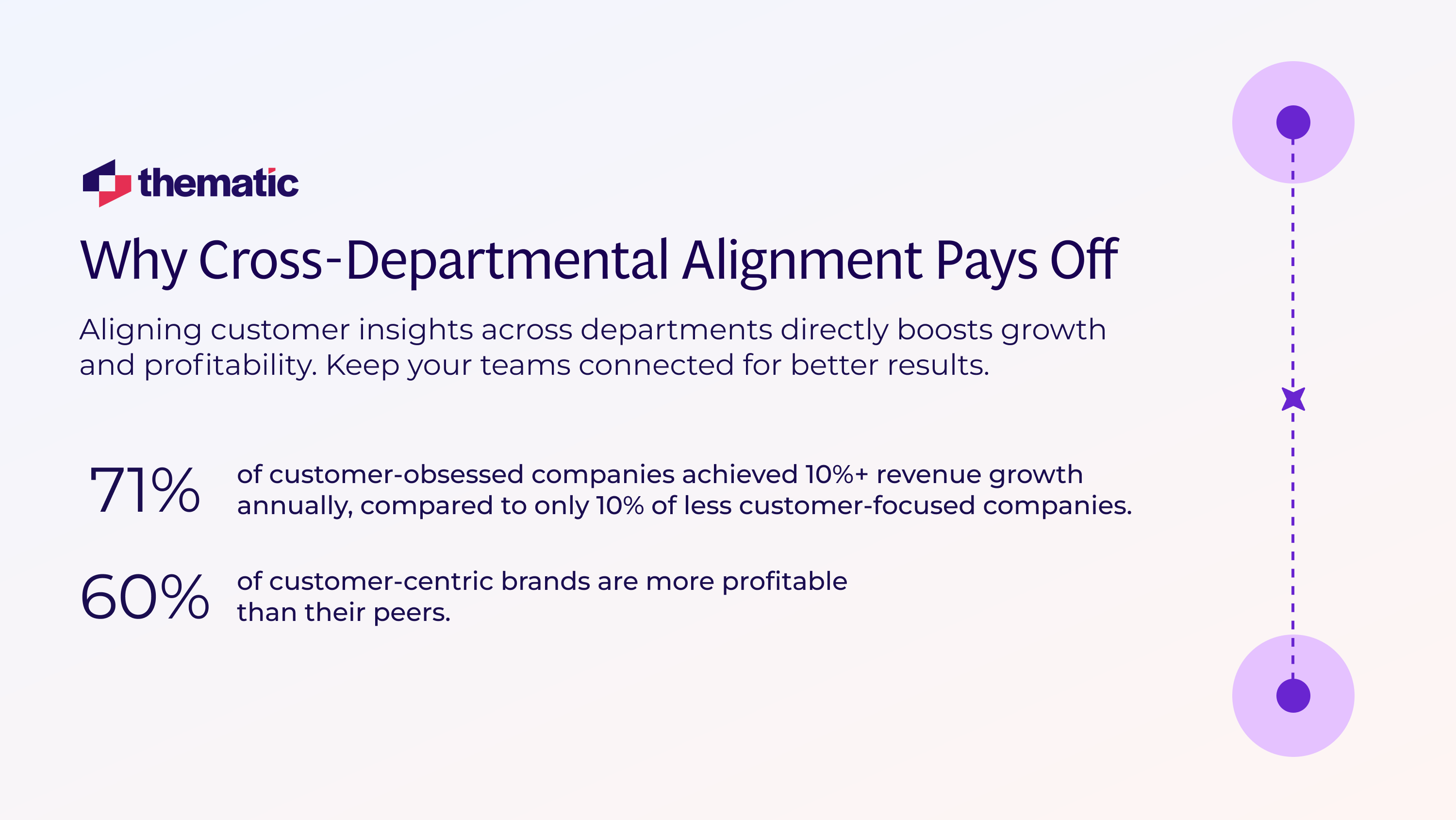
Regularly share insights through simple dashboards highlighting both customer and business metrics. Communicating clearly how insights drive growth creates enthusiasm and buy-in across your entire organization.
Congrats—you’ve built and started executing your customer insights strategy!
But the journey doesn't stop here.
Winning strategies continuously evolve because customer preferences shift, markets change, and new feedback channels (like TikTok today or something else tomorrow) emerge.
Here’s how to keep your strategy fresh and effective:
Most importantly, create a culture embracing continuous improvement. Encourage teams to view negative feedback as free advice, celebrate wins openly, and analyze failures constructively.
Top companies don't treat customer insights as one-off projects—they’re ongoing programs. Continuous refinement builds stronger customer loyalty and increases profitability. Customers appreciate a brand that consistently improves, responding proactively to their feedback.
Before we wrap up, remember that patience is key.
Building a data-driven, customer-centric culture doesn’t happen overnight. But each improvement, each insight acted upon, is a step toward a better customer experience and a healthier business. Keep at it, and your strategy will only get stronger with time.
By following the steps we discussed here, you’ll create a customer-centric culture where decisions are driven by data and empathy for the user experience. The payoff is huge—happier customers, better products or services, and ultimately a stronger bottom line.
Remember, companies that excel at customer experience have been shown to outshine their competitors in revenue growth and loyalty.
You can start small and simple, but start today.
Turn your customer comments into your company’s next winning move! Thematic can help!
Experience feedback analysis in action on your own data with a demo of Thematic.
Join the newsletter to receive the latest updates in your inbox.